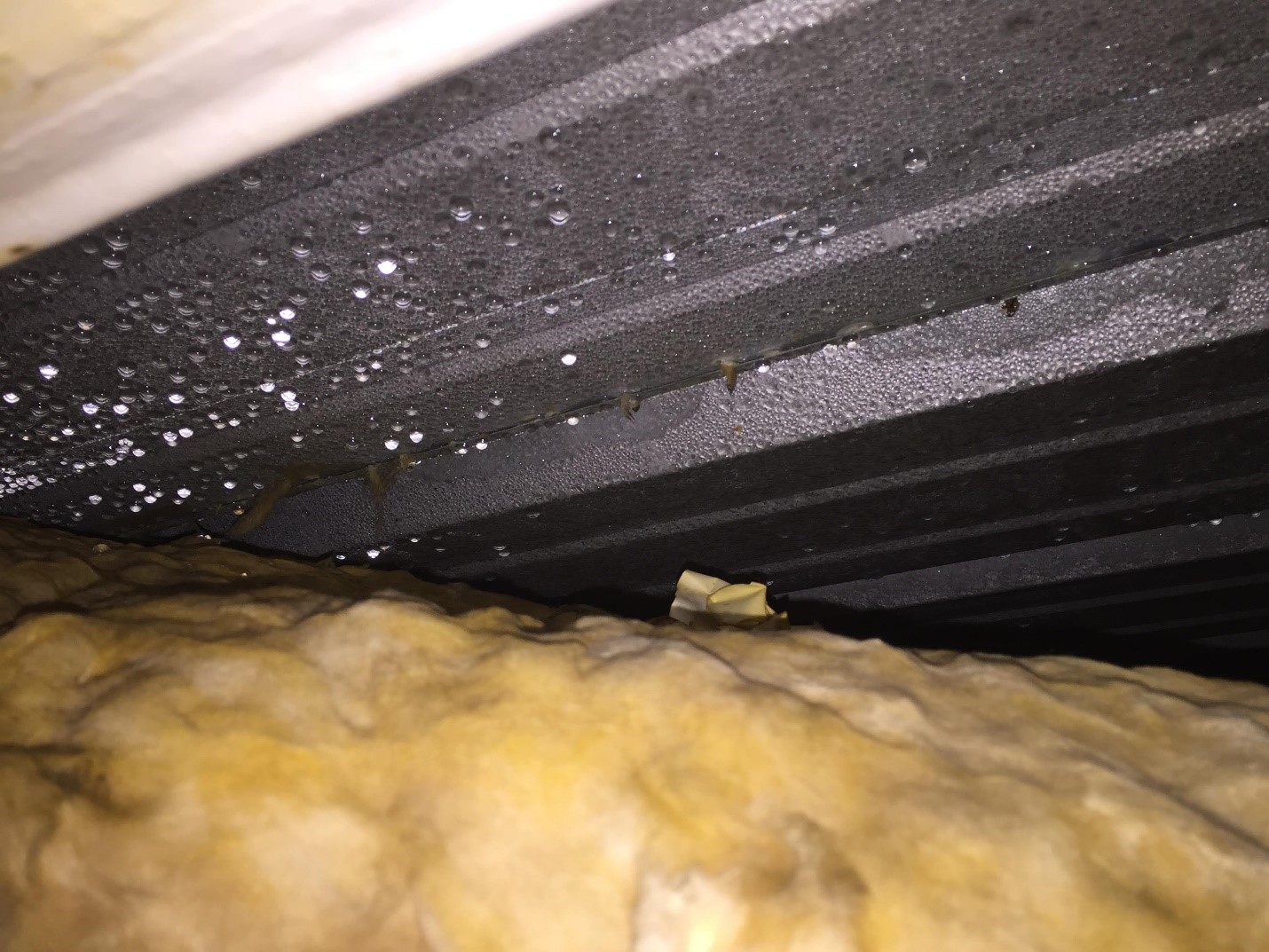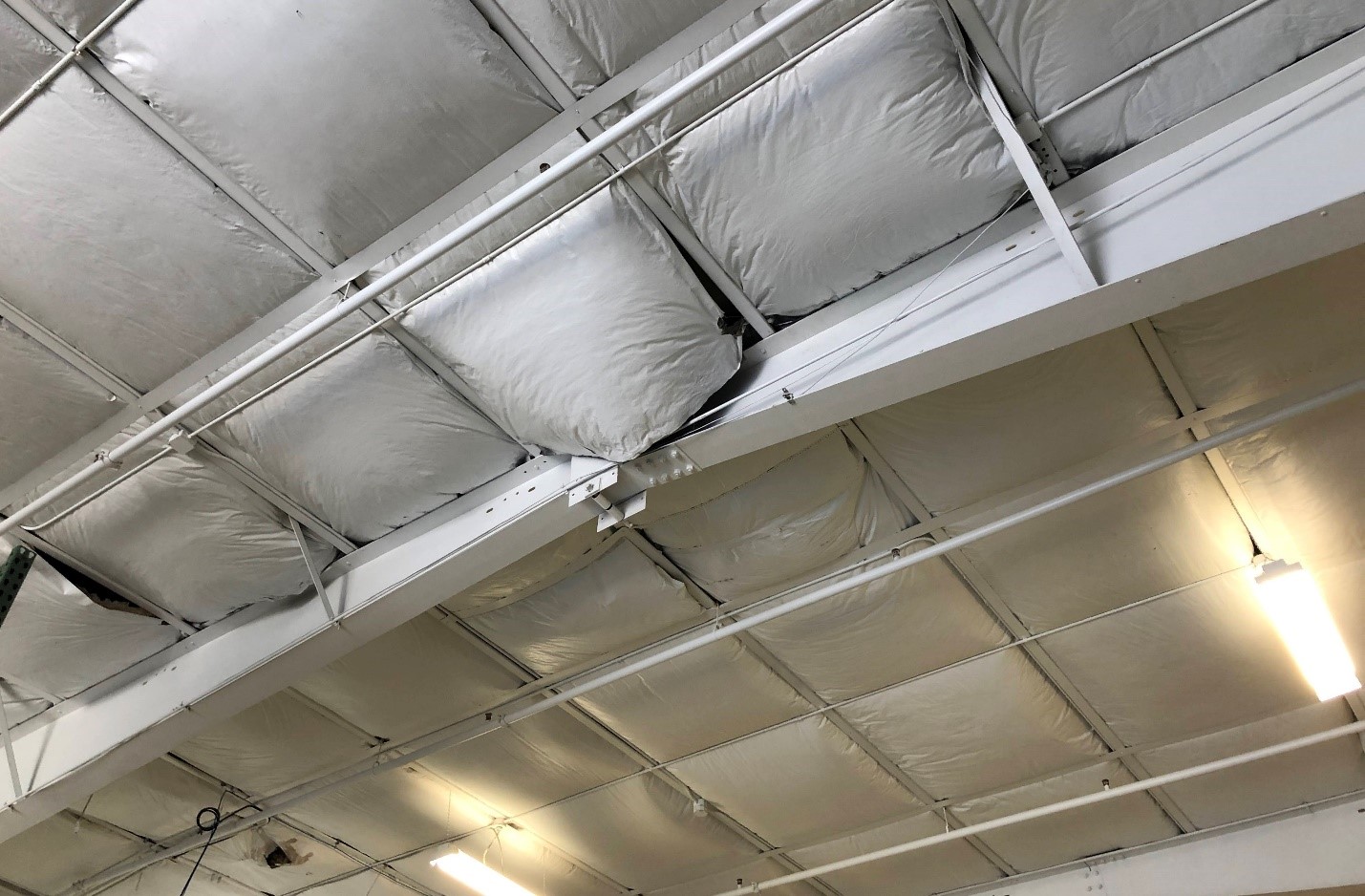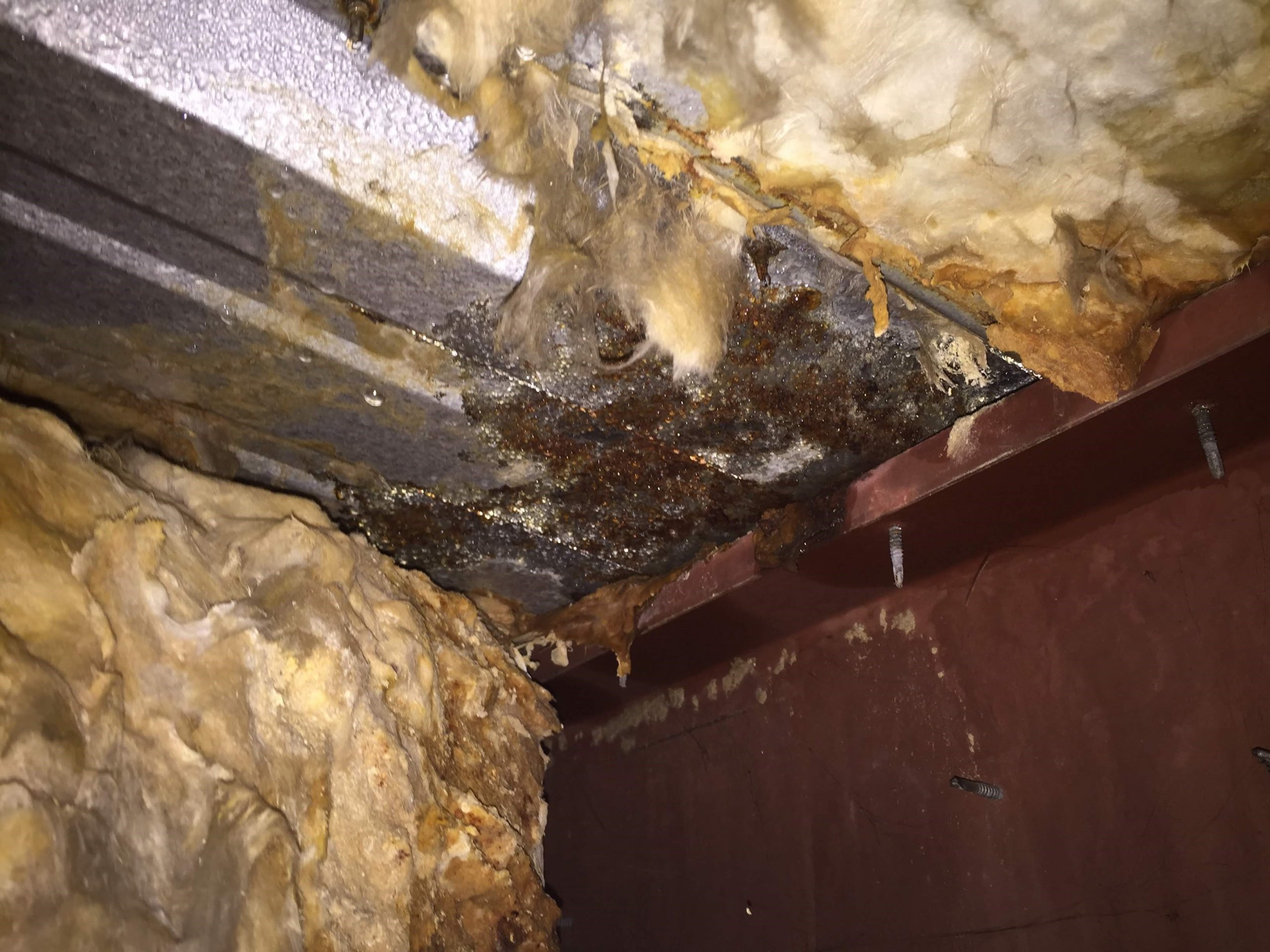Wet Insulation: Safety and Health Concerns

Should you worry about wet insulation?
Your roof has a minor leak, but it isn’t causing any apparent damage or safety concerns – or is it? What you can’t see is that your insulation is wet and that is an expensive thing to replace and a dangerous thing to ignore.
Your insulation sits just below your roof. Therefore, it’s the first thing to be impacted by a roof leak. Wet insulation increases the weight and burden that is put onto your roof. This can lead to warping and other structural problems. According to the American Society for Testing and Materials, water and humidity can increase the weight of insulation by 275%1.
Wet insulation is heavy & so are the health concerns.

When you have fiberglass, mineral, or wool insulation then you also need to watch out for formaldehyde. When formaldehyde gets wet or is in a place with high temperature or humidity it “off-gasses”. Off-gassing is the deterioration of a chemical. This happens with many different chemicals’ even your common crafting glue. The difference with formaldehyde is that the resulting off-gas is extremely dangerous. Even though the levels of the gas decline VERY slowly over time, they never reach zero.
Formaldehyde off-gass is a safety hazard.

Formaldehyde off-gasses only during a few situations—when it’s being installed and when it’s wet or humid. So, your insulation might be okay when it’s dry, but the second that “minor” roof leak comes back, so do the effects.
Formaldehyde off-gas is extremely corrosive, corroding your roof and nearby structures from the inside out. The off-gas slowly degrades your roof fasteners and rusts your studs and wall ties. All this and, not to mention the health risks!
Below are the health effects at the different exposure levels. Your fiberglass insulation emission rate is 32.
No Effects 0 – 0.05 PPM
Odor Threshold 0.5 – 1.0 PPM
Neurophysiological effects 0.05 – 1.05 PPM
Eye irritation 0.05 – 2.0 PPM
Upper Respiratory Irritation 0.1 – 25 PPM
Lower airway and pulmonary effects 5.0 – 30 PPM
Pulmonary edema, pneumonia 50 – 100 PPM
Death 100 PPM
Formaldehyde and plastics off-gas for the longest periods of time and will always return when they are exposed to leaks, high temperatures, or humidity again.
From the structural integrity of your building to the safety of the people within it—your insulation is NOT something you want to be compromised!
1 – Govan, F A, et al., editors. “Thermal Insulation, Materials, and Systems for Energy Conservation in the ’80s.” Google Books, 1983, p. 637
“The 4 Risks of Wet Roof Insulation You Can’t Ignore.” MainSource Roof Management, MainSource Roof Management, 2019
